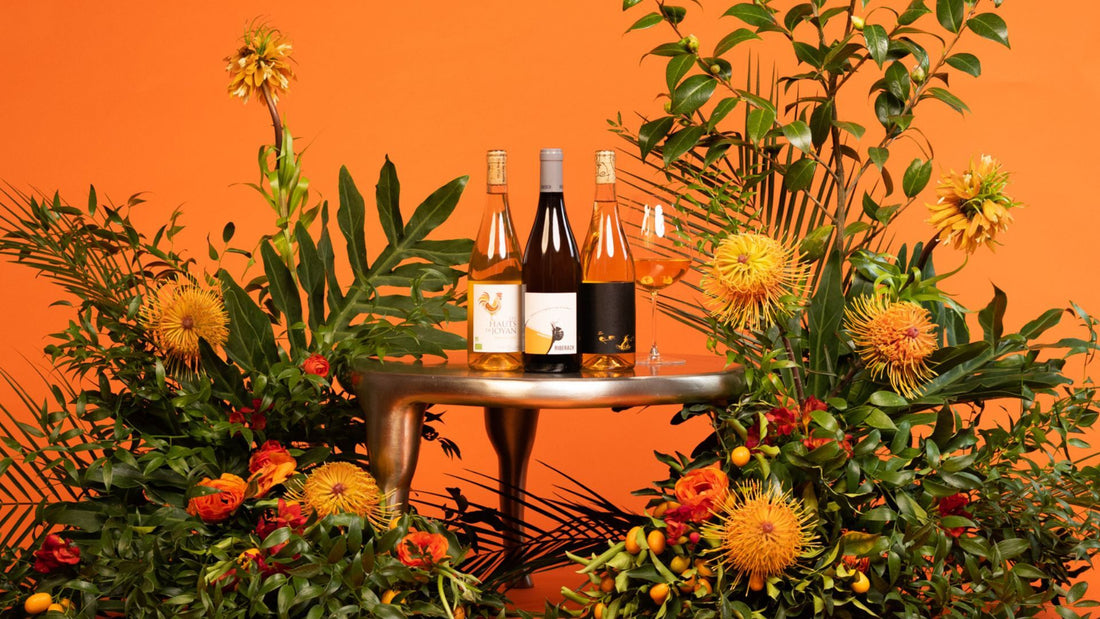You may have noticed recently that there’s a “new” color in the vinous rainbow: Orange. Perhaps you’ve seen orange wine listed by the glass at your favorite trendy restaurant, or spotted it on the shelves of your local bottle shop—maybe you’ve been curious to try it, but you weren’t sure what it was all about; maybe you’re still trying to get a handle on red, white, and pink wine. But it turns out that while orange wine is indeed pretty buzzy right now, it’s not actually new at all; it’s one of the most traditional, ancient wines on the planet.
So what is orange wine and how has it made a resurgence in the modern wine market?
Where did Orange Wine Come From?
The first orange wines were made about 8,000 years ago, in what is now the country of Georgia, where wine is known to have been invented. Long before the invention of oak barrels or stainless steel fermentation tanks, Georgian winemakers crushed their grapes and fermented them whole—skins, seeds, juice, and all—in large clay jars called qvevri, which were sealed with clay or beeswax and buried underground for natural temperature control. When white grapes were used for this method, it resulted in a deeply pigmented, amber-hued wine with a tannic structure similar to a light red wine.
What is Orange Wine Today?
Orange Wine can also be called “Amber Wine” or White Wine with “Skin Contact”. In typical modern winemaking, red grapes are processed whole, but the juice of white grapes is separated from the skins prior to fermentation, since the skins are where the berries derive their color and tannin. So in Georgian qvevri wines, the white grapes are treated sort of like a modern-day red wine, resulting in a best-of-both-worlds situation: you end up with the bright, fresh fruit and crisp acidity of a white wine, with the structure and savory nuance of a red.
Orange Wine can also be called “Amber Wine” or White Wine with “Skin Contact”
Today, you don’t have to travel to Georgia to taste orange wine—producers all over the world have adopted this mouth-watering, food-friendly style of wine. Orange wine is particularly common in the Friuli-Venezia-Giulia region of Northern Italy, where the wine style was reinvigorated in the late 1990s, as well as just across the border in Slovenia. It’s also increasing in popularity across the globe, where producers in Austria, California, France, Australia, South Africa, and just about everywhere else are getting in on the orange wine revival.
Think of orange wine as sort of a reverse rosé: Pink wines get their rosy hue when winemakers separate red grapes from their skins after a quick maceration (typically hours or days)—just long enough to stain the juice with a pretty blush, salmon, or coral color.
Most producers don’t leave the skins and juice together for the entire duration of the fermentation—the skin contact period (or maceration) can last hours, days, weeks, or even months, depending on the style intended by the winemaker. Shorter maceration times lead to fresher, more vibrant wines that are sometimes referred to simply as “skin contact” wines, since they only get a slight (or unnoticeable) boost of color from the process. Longer maceration will produce powerful, structured orange wines with deep tangerine, marigold, or even russet brown tints alongside intense aromas and flavors like dried apricot, toasted hazelnut, and dried flowers, and sometimes a tart character resembling kombucha or sour beer. 
Why Orange Wine?
It’s no surprise that the re-emergence of this ancient winemaking technique has been such a success—orange wine is an incredibly versatile category that can please a wide range of palates. It effortlessly bridges the preferences of red and white wine drinkers by offering ample backbone alongside zippy acidity and a complex blend of fruity, savory, and floral notes. It’s also a remarkably flexible food pairing wine, for similar reasons, and makes a great complement to medium-weight fare like chicken, fish, or vegetarian cuisine—or to a family-style meal with many distinct dishes on the table at once. Once you experience orange wine, it’s hard not to love it for all the unique traits it has to offer. Perhaps that’s why, 8,000 years later, this ancient classic is still going strong.
THE DRY FARM WINES PROMISE
Every one of our pure Natural Wines must taste delicious. After all, even if a wine is grown to the highest natural standards, it needs to taste good to enjoy it. Our wines undergo a meticulous tasting protocol by our wine team. We taste for purity, honesty, sense of place, and dynamic spirit. As a result, our Natural Wines are vibrant and elegant.
Not only are Dry Farm Wines naturally delicious, but they are also:
- Sugar Free
- Lower Alcohol
- Lower Sulfites
- Organically Farmed
- Contain No Industrial Additives
It is time to become a wine club member! Join a community of wine enthusiasts at Dry Farm Wines today by checking out our membership box.

